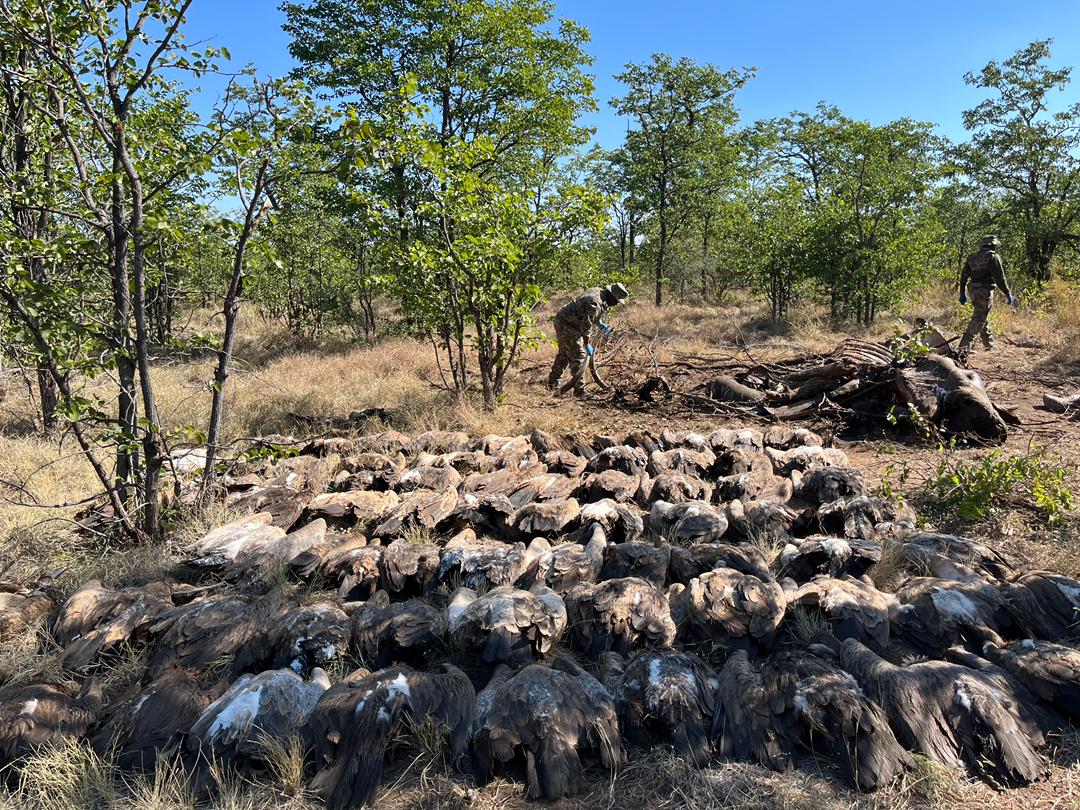NATIONAL NEWS - A tragic mass poisoning event in the Mahlangeni Section of the Kruger National Park has left over 120 vultures dead, but thanks to a rapid and coordinated rescue effort, 84 others were saved from certain death.
The poisoning was detected in the early hours of Tuesday 6 May by the Endangered Wildlife Trust’s (EWT) cutting-edge wildlife poisoning surveillance system, which flagged suspicious activity at 06:05. Within just over two hours, SANParks rangers and EWT officials had mobilised and arrived at the site.
What they found was horrific: the carcass of an elephant, deliberately laced with toxic agricultural chemicals, had become the epicentre of a mass poisoning - likely carried out by poachers aiming to harvest vulture body parts for the illegal wildlife trade.
A total of 123 vultures were found dead, including 102 White-backed Vultures, 20 Cape Vultures, and one Lappet-faced Vulture.
These birds are all listed as endangered or critically endangered species. Of these, 116 had already died before the team arrived.
A rescue effort of unprecedented scale
The response was swift and extensive. The first on the scene—six SANParks rangers and two EWT officials—found just two vultures alive but visibly affected about 500 metres from the poisoned site. These birds were immediately stabilised using atropine, activated charcoal, and fluid therapy.
More support quickly followed. Veterinary teams from Moholoholo Wildlife Rehabilitation Centre, Briner Veterinary Services and Wildscapes Veterinary Services were dispatched. SANParks deployed aerial support, including helicopters, for the first time in a poisoning response of this magnitude.
The operation’s highlights included:
• 84 vultures rescued alive, including White-backed, Cape, and Hooded Vultures.
• 45 birds were transported via the EWT’s dedicated “vulture ambulance” to treatment facilities.
• 39 more were airlifted by helicopter to SANParks' K9 unit in Phalaborwa for urgent monitoring.
• A final group was taken to Moholoholo later that evening for continued care.
Veterinarians and rescue teams worked through the night to stabilise every bird.
Sadly, five vultures succumbed to the poisoning, but the teams achieved a remarkable 96% survival rate.
As of Thursday morning 8 May, 83 vultures remain alive and are recovering.
A grim reminder of an escalating threat
This event stands as one of the most significant vulture poisoning incidents in southern Africa’s history.
It also marks the most extensive coordinated rescue operation to date, involving over 20 individuals across conservation, veterinary and enforcement fields.
Poisoning has become an increasingly common tool used by poachers targeting not only vultures but also lions and other species in demand for traditional medicine, known as muthi.
These events have a catastrophic impact on already vulnerable wildlife populations.
“This is a major setback for the vulture population in the Greater Kruger landscape,” said SANParks in a statement.
“But without the rapid detection by EWT’s system and the seamless collaboration between all the teams involved, the loss would have been far greater.”
SANParks is now working with partners to address the growing frequency of such poisoning events, with the incident reinforcing the critical need for continued cooperation and investment in wildlife protection.
A moment of hope amidst devastation
Helicopters made multiple trips between the poisoning site and Phalaborwa throughout the day, ensuring the birds received urgent medical attention.
While the scale of loss is sobering, the operation stands as a shining example of what is possible when conservation agencies unite under pressure.
SANParks has praised all those involved, saying, “Their courage, skill and relentless commitment turned what could have been an extinction-level event into one of the most successful vulture rescue operations ever recorded.” Rangers attending to the poisoning scene
Rangers attending to the poisoning scene
‘We bring you the latest Garden Route, Hessequa, Karoo news’
















